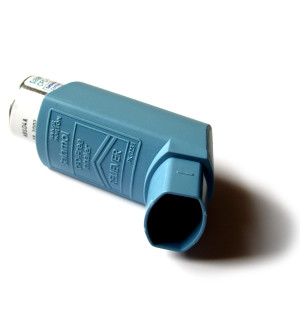- Navigating Your Midlife Crisis: Embracing New Possibilities
- City Raccoons Showing Signs of Domestication
- Mapping the Exposome: Science Broadens Focus to Environmental Disease Triggers
- One Week Less on Social Media Linked to Better Mental Health
- Your Brain Changes in Stages as You Age, Study Finds
- Some Suicide Victims Show No Typical Warning Signs, Study Finds
- ByHeart Formula Faces Lawsuits After Babies Sickened With Botulism
- Switch to Vegan Diet Could Cut Your Greenhouse Gas Emissions in Half
- Regular Bedtime Does Wonders for Blood Pressure
- Dining Alone Could Mean Worse Nutrition for Seniors
Despite Pockets of Resistance, Most U.S. Kids Getting Vaccinated


More than nine out of 10 U.S. children entered kindergarten last school year protected with the proper immunizations, federal health officials reported Thursday.
But, vaccination rates continue to lag in a number of states — a worrisome finding, especially in light of the recent measles outbreak, officials said.
Average vaccination coverage for new kindergarteners was 94 percent for the measles/mumps/rubella (MMR) vaccine. It also was 94 percent for the diphtheria/tetanus/pertussis vaccine in the 49 reporting states and the District of Columbia for the 2014-15 school year, U.S. Centers for Disease Control and Prevention researchers found.
About 94 percent of kindergarteners also received the two-dose vaccine for chickenpox in the 39 states where it is required, the findings showed.
“Overall, the news is gratifying. Though they may not always get the headlines, the overwhelming majority of parents continue to protect their children with recommended vaccinations,” Dr. Anne Schuchat, director of the CDC’s National Center for Immunization and Respiratory Diseases, said during a media briefing.
But there are some areas in the country that have shown resistance to immunization.
Seven states had less than 90 percent coverage for the measles/mumps/rubella vaccine. Those states are Arkansas, Colorado, Idaho, Indiana, Kansas, North Dakota and Washington.
“Pockets of children who miss vaccination exist in our communities, and they leave these communities vulnerable to vaccine-preventable diseases,” Schuchat said.
The United States experienced a record number of measles cases during 2014, with 668 cases from 27 states reported to the CDC. It was the largest number of cases since U.S. public health officials declared the eradication of measles in 2000.
So far this year, 188 people from 24 states and the District of Columbia have come down with the measles, with most cases linked to a large multi-state outbreak traced back to visitors who picked up the virus at Disneyland in Southern California.
“During 2015, measles outbreak cases have included 68 unvaccinated U.S. residents, among whom 29 (43 percent) cited philosophic or religious objections to vaccination,” the study authors wrote in the Aug. 28 issue of the CDC’s Morbidity and Mortality Weekly Report. “Maintaining high vaccination coverage levels is important for measles control and elimination.”
Some parents choose to skip or delay vaccinations not for medical reasons, but for “personal beliefs” — mainly, unsupported fears about vaccine safety, health officials say. The notion that the measles/mumps/rubella vaccine causes autism has lingered for years, even though the 1998 study that proposed the theory was later found to be fraudulent.
According to health officials, an important concept in vaccination is “herd immunity” — the phenomenon when, if an overwhelming number of people receive vaccinations, even those who can’t get vaccinated due to age or health issues will be protected.
Children who can receive vaccines, but don’t, pose a threat to the herd immunity of a community, Schuchat said.
“Protecting people from this kind of threat is why achieving and sustaining high local vaccination coverage is important,” she explained.
The percentage of children who don’t receive vaccinations remains low, at less than 1 percent. The percentage of parents requesting vaccination exemptions for their kids also is low, amounting to an average 1.7 percent of kindergarteners nationwide, the CDC reported.
But, a handful of states had vaccination exemption rates that exceeded the national average. The highest exemption rates were found in Idaho (6.5 percent), Vermont (6.1 percent), Oregon (6 percent), Alaska (5.8 percent) and Michigan (5.3 percent).
Additionally, five states did not meet the reporting standards for providing exemption data. They are Illinois, Minnesota, Missouri, Texas and Wyoming, the CDC said.
In one important change from 2013 to 2014, the number of states that provided local coverage and exemption data online increased from 18 to 21. Making this information available publicly keeps parents informed, guides vaccination policies and strengthens immunization programs, CDC officials said.
“I really want to applaud and recognize states that routinely are making this information available to parents and families,” Schuchat said. “I’d like to encourage parents who live in these states to find out what’s going on around them.”
The study authors noted that many states have passed laws to better require and track immunizations of children entering school.
For example, California this year removed both religious and philosophic exemptions for public and private school children, while Vermont removed philosophic exemptions but not religious exemptions. Oregon passed a law requiring improved public reporting of school vaccination rates.
Schuchat noted that school vaccination requirements played a key role in the earlier effort to eradicate measles.
“We certainly believe it should be easier to get a vaccine than to get an exemption,” she said.
More information
Learn more about childhood vaccinations at the U.S. Centers for Disease Control and Prevention.
Source: HealthDay
Copyright © 2025 HealthDay. All rights reserved.










